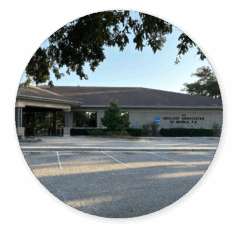Client stories / Oracle Health System
Health system proves digital intake works anywhere—from busy EDs and beyond
74% ED utilization, higher collections and more patients without more staff

Multi-hospital
700+ providers
Hospitals, ambulatory practices, ED and more
Oracle Health (PowerChart)
74%
of ED patients checked in digitally
80%
copay collection rate
95%
patient satisfaction
2025
AVIAward recipient*
*Recognized for outstanding innovation in digital transformation among 50 health systems
The problem
Before Phreesia, this large mid-Atlantic health system’s intake processes were inefficient and inconsistent, undermining both patient experience and staff productivity.
Patients were frustrated by long wait times and being asked to repeat the same questions across visits—even just days apart. Staff relied on manual, duplicative processes that varied depending on who handled intake. Important details were sometimes missed altogether, and information that did make it into the EHR was incomplete or entered inconsistently, making it unreliable for caregivers.
The gaps had real consequences: incomplete documentation led to billing errors, denials and delayed collections, while the lack of standardization created inefficiency and uneven experiences across care settings.
The need
A digital intake solution to streamline workflows, reduce denials, improve collections and give patients an easier way to check in—without adding staff.
The solution
They launched Phreesia with an all-hands-on-deck, multiphase rollout. They began with medical groups to get quick wins, build champions and gain momentum before expanding into hospital outpatient departments and EDs.
The key was tailoring workflows to each care setting. In the ED, they built three distinct workflows based on patient acuity and arrival method, including ambulance arrivals, to streamline intake without slowing care. In other settings, intake was configured by location, visit type, provider, insurance and more, ensuring patients only completed the questions and forms relevant to their visit. For example, the state’s facilities fee notice—required only in provider-based clinics—is now automatically presented where appropriate.
That flexibility made it possible to scale systemwide. Leaders emphasized two lessons: prioritize clinical and financial workflows from the start and bring the ED into the rollout early. Success there sent a powerful message across the organization: if it works in the ED, it can work anywhere.
And the results speak for themselves. Patient throughput has increased significantly, while staffing levels have remained flat. “We’re seeing more patients, faster, without needing to add staff—and we simply couldn’t do that without Phreesia,” says their Chief Revenue Officer. At the same time, the health system has preserved revenue through reduced no-shows, increased collections, and lowered denied claims—all while maintaining 95% patient satisfaction in alignment with its mission to meet patients where they are and make care accessible in every setting.
Phreesia has truly improved our efficiency. Insurance verification is seamless, discrepancies are resolved in real time, and we’ve seen fewer denials, stronger collections and less bad debt, all while keeping patient satisfaction steady at about 95%.”
– Chief Revenue Officer, mid-Atlantic health system






